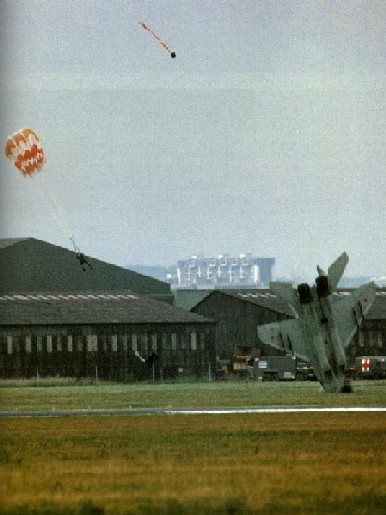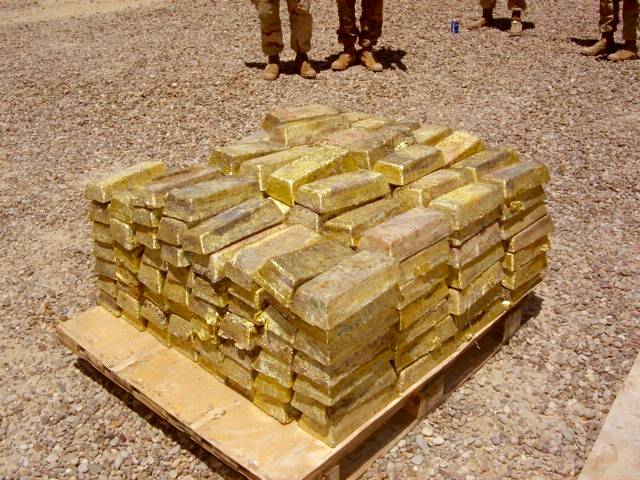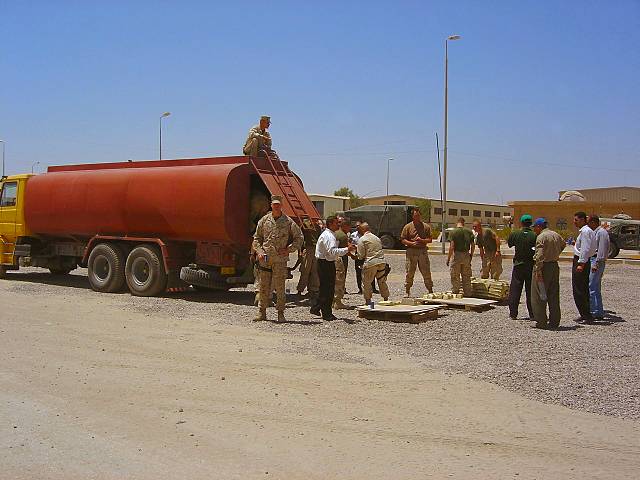Best E-mails of the Week 02/03/04. 05 06 07?
It is completely encased in snow....the blue sky day was a rare occurance,
so that was why I took some pictures.....
jmy
Hello Pete.....
Captain Chris Stricklin ejected safely during the "Gunfighter Skies 2003" air show at Mountain Home AFB (50 miles south of Boise, Idaho).
Apparently, Stricklin misinterpreted his altitude and initiated his Split-S maneuver 800 feet lower than he should have. Full story here. (Great video)
This shot shows Stricklin ejecting just 140 feet above the ground - 0.8 seconds before impact.


Here's a great story from the NYTimes. Computer viruses can be a good thing.
This one twenty three years ago is why we are not speaking Russian today!
The Farewell Dossier
Intelligence shortcomings, as we see, have a thousand fathers; secret intelligence triumphs are orphans. Here is the unremarked story of "the Farewell dossier": how a C.I.A. campaign of computer sabotage resulting in a huge explosion in Siberia — all engineered by a mild-mannered economist named Gus Weiss — helped us win the cold war. Weiss worked down the hall from me in the Nixon administration. In early 1974, he wrote a report on Soviet advances in technology through purchasing and copying that led the beleaguered president — détente notwithstanding — to place restrictions on the export of computers and software to the U.S.S.R. Seven years later, we learned how the K.G.B. responded. I was writing a series of hard-line columns denouncing the financial backing being given Moscow by Germany and Britain for a major natural gas pipeline from Siberia to Europe. That project would give control of European energy supplies to the Communists, as well as generate $8 billion a year to support Soviet computer and satellite research. President François Mitterrand of France also opposed the gas pipeline. He took President Reagan aside at a conference in Ottawa on July 19, 1981, to reveal that France had recruited a key K.G.B. officer in Moscow Center. Col. Vladimir Vetrov provided what French intelligence called the Farewell dossier. It contained documents from the K.G.B. Technology Directorate showing how the Soviets were systematically stealing — or secretly buying through third parties — the radar, machine tools and semiconductors to keep the Russians nearly competitive with U.S. military-industrial strength through the 70's. In effect, the U.S. was in an arms race with itself. Reagan passed this on to William J. Casey, his director of central intelligence, now remembered only for the Iran-contra fiasco. Casey called in Weiss, then working with Thomas C. Reed on the staff of the National Security Council. After studying the list of hundreds of Soviet agents and purchasers (including one cosmonaut) assigned to this penetration in the U.S. and Japan, Weiss counseled against deportation. Instead, according to Reed — a former Air Force secretary whose fascinating cold war book, "At the Abyss," will be published by Random House next month — Weiss said: "Why not help the Soviets with their shopping? Now that we know what they want, we can help them get it." The catch: computer chips would be designed to pass Soviet quality tests and then to fail in operation. In our complex disinformation scheme, deliberately flawed designs for stealth technology and space defense sent Russian scientists down paths that wasted time and money. The technology topping the Soviets' wish list was for computer control systems to automate the operation of the new trans-Siberian gas pipeline. When we turned down their overt purchase order, the K.G.B. sent a covert agent into a Canadian company to steal the software; tipped off by Farewell, we added what geeks call a "Trojan Horse" to the pirated product. "The pipeline software that was to run the pumps, turbines and valves was programmed to go haywire," writes Reed, "to reset pump speeds and valve settings to produce pressures far beyond those acceptable to the pipeline joints and welds. The result was the most monumental non-nuclear explosion and fire ever seen from space." Our Norad monitors feared a nuclear detonation, but satellites that would have picked up its electromagnetic pulse were silent. That mystified many in the White House, but "Gus Weiss came down the hall to tell his fellow NSC staffers not to worry. It took him another twenty years to tell me why." Farewell stayed secret because the blast in June 1982, estimated at three kilotons, took place in the Siberian wilderness, with no casualties known. Nor was the red-faced K.G.B. about to complain publicly about being tricked by bogus technology. But all the software it had stolen for years was suddenly suspect, which stopped or delayed the work of thousands of worried Russian technicians and scientists. Vetrov was caught and executed in 1983. A year later, Bill Casey ordered the K.G.B. collection network rolled up, closing the Farewell dossier. Gus Weiss died from a fall a few months ago. Now is a time to remember that sometimes our spooks get it right in a big way.
E-mail: safire@nytimes.com |
|||||||||||||||||||
BEST DRINKING STORY EVER
>
> >>From the state where drinking and driving is considered a sport,
> >>Kansas, comes a true story. Recently a routine police patrol parked
> >>outside a local neighborhood
bar.
> >>Late in the evening the officer noticed a man leaving the bar so
> >>intoxicated that he could barely walk. The man stumbled around the
> >>parking lot for a few minutes with the officer quietly observing.
> >>After what seemed an eternity and trying his keys in five different
> >>vehicles the man managed to find his own car which he fell into. He
> >>was there for a few minutes as a number of other patrons left the
> >>bar and
drove off.
> >>Finally he started the car, switched the wipers on and off (it was a
> >>dry
night),flicked the hazard flasher on and off, tooted the horn and then
switched on the lights. He moved the vehicle forward a few inches, reversed
a little and then remained stationary for a few more minutes as more patrons
left in their vehicles. At last he pulled out of the parking lot and started
to drive slowly down the street. The police officer, having patiently
waited all this time, now started up his patrol car, put on the flashing lights,
promptly pulled the man over and carried out a breathalyzer test. To his amazement
the breathalyzer indicated no evidence of the man having consumed alcohol at all!
> >>Dumbfounded, the officer said, "I'll have to ask you to accompany me
> >>to the police station. This breathalyzer equipment must be broken."
> >>"I doubt it," said the man, "Tonight I'm the designated decoy."




Pete
Back to the Best E-mails Home Page